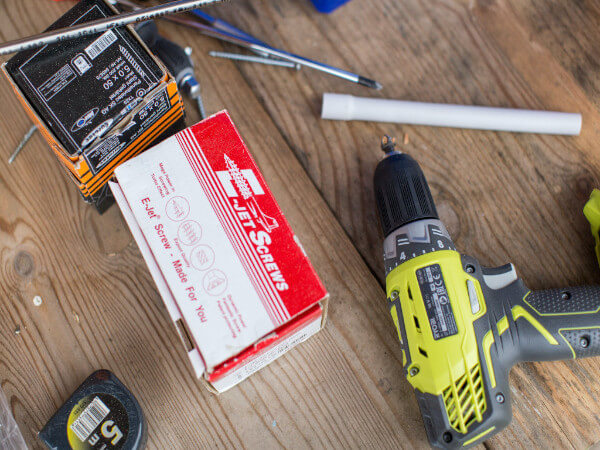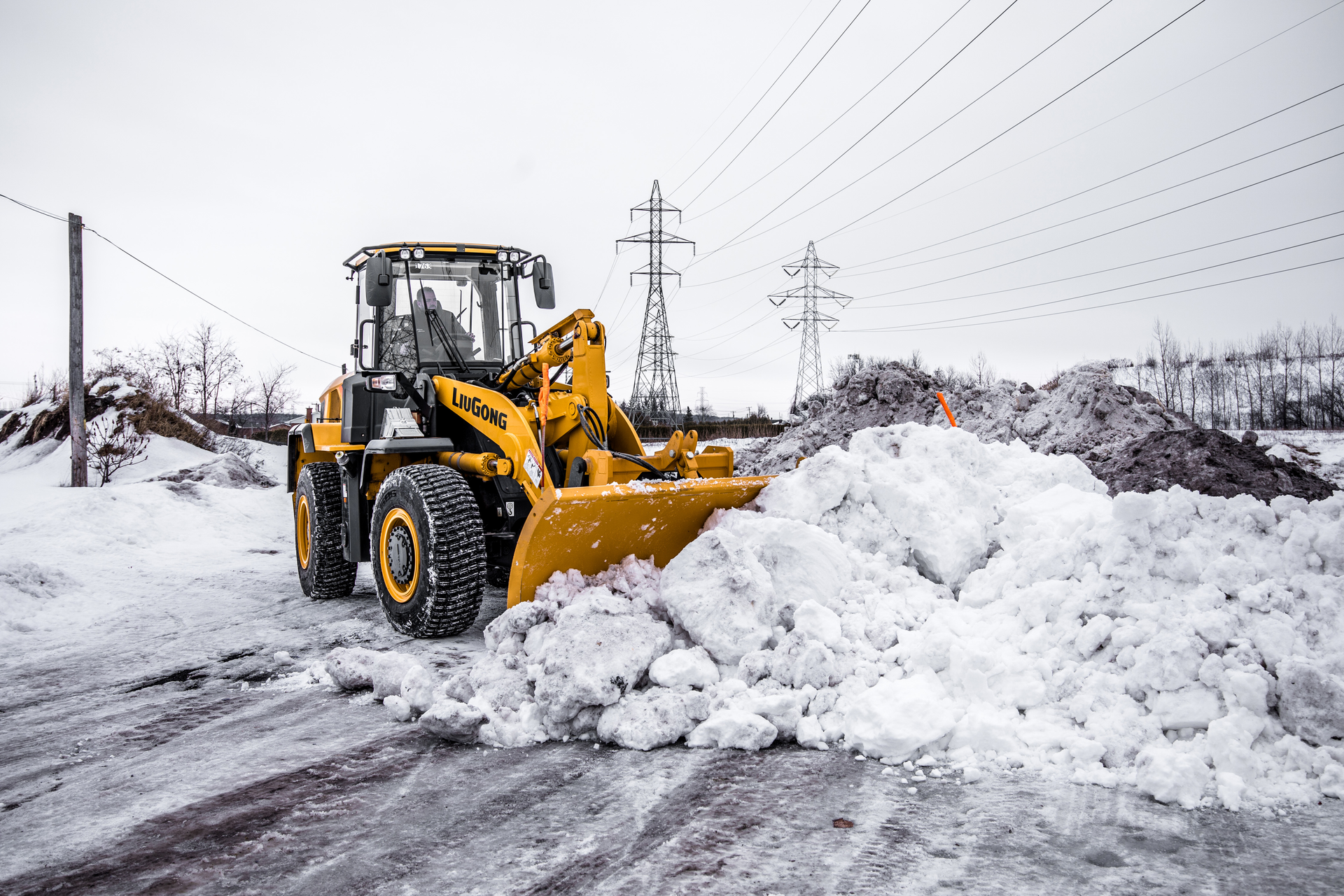Home » Construction Management
Category Archives: Construction Management
Industry Roundup: Hydrogen-Fueled Equipment to Come in 2022
Hydrogen-fueled equipment to come in 2022
JCB is investing $138 million on a project to produce carbon-free hydrogen engines, the company announced last month. The first hydrogen-fueled machines will be ready for customers by the end of 2022.
According to JCB Chairman Lord Bamford, the company is investing in hydrogen because electric power has limits and is not an all-around solution, especially when it comes to larger machines. “We will carry on making engines, but they will be super-efficient, affordable, high-tech hydrogen motors with zero CO2 emissions, which can be brought to market quickly using our existing supply base,” says Bamford.
The company has already shown a prototype hydrogen-powered JCB backhoe loader. A second JCB machine – a Loadall telescopic handler – was unveiled October 19 at an event in London attended by Prime Minister Boris Johnson.

Firmatek acquired Kespry’s drone-based aerial intelligence platform.BuildwittDrone maker Kespry bought by Firmatek
Two leaders in the world of drone applications for the construction, mining and aggregate industries have joined forces. The combination of Firmatek’s drone-data processing and engineering services with Kespry’s drone-based mapping intelligence platforms will create new opportunities to deliver a vertical SaaS platform for drone-based analytics.
The acquisition will accelerate the use of artificial intelligence technologies and deep-learning frameworks to analyze and process topographic analysis of mining and aggregate worksites, increase data accuracy, improve site safety and eliminate potential risks.
“By combining Firmatek’s resources with Kespry’s expertise and leadership in AI-driven, SaaS software, we can provide better outcomes for our customers,” says Lauren Elmore, Firmatek’s chief executive officer.
Equipment World has reported on Kespry’s offerings several times in the last few years. To learn more about its technology, check out the links below.
With three big updates, Kespry gives construction customers little reason to take their drone data elsewhere
John Deere dealers to offer Kespry’s automated construction drone service in exclusive deal
Kespry Drone 2s brings centimeter-level survey accuracy, single base station setup to automated drone platform

Tag tools and attachments with the Kin asset tracking system and you’ll always know where they are.TrackunitIf you can’t find a tool, try checking your Kin
Everybody knows that workers waste significant amounts of time searching for lost equipment. And according to Trackunit, only one out of five lost tools are ever found. One solution, announced at the ARA show in Las Vegas, is Trackunit’s new Kin Asset Utilization, which collects movement data from tagged assets and shows you in real time if the equipment is being used.
The Kin ecosystem resides within a platform to greatly increase the scope of data available to users and organizations and continues to enhance solutions in an ever more data-led construction market.
The Kin tags leverage the company’s mesh network and connect to the company’s Raw (TU600) installed network of devices via the Trackunit Manager and the Trackunit Go app. Each connected tag links to the TU600 network installed on machines around the globe, connecting the user and expanding the data available for business insights.

Couplers and work tools bearing this logo can work with any excavator from OEMs that are members of the Open-S Alliance.Open-S AllianceVolvo joins Open-S Alliance
Recently Volvo announced it has joined the Open-S Alliance. The alliance is a group of manufacturers that have agreed to design hydraulic attachments in such a way that their quick couplers and adaptors will work with any excavator regardless of the brand of the machine. This makes it easier for contractors to use different couplers, tiltrotators and work tool brands without being locked into a proprietary solution from one manufacturer.
The Open-S Alliance is a manufacturer-independent organization. There are three levels of membership: full, associate and supporting, depending on if Open-S products are developed, produced in-house or sourced. Since early 2021, Volvo CE has delivered quick couplers and adaptors directly from the factory and is now joining the Open-S Alliance as a supporting member.
Survey says data driving AEC transformation
More bricks than bytes, construction has been slow to adopt digital technology. But that is changing, according to a new report from Dodge Data & Analytics and Autodesk. The study finds the most frequently used BIM (building information modeling) technologies by architecture, engineering and construction firms are cloud computing (42%), model-based simulation (33%), virtual/augmented/mixed reality (28%), 3D printing (25%) and reality capture (25%).
The technologies best poised for growth, with a relatively high percentage of respondents who expect to adopt them in the next two to three years, include generative/outcome-based design (20%), 3D printing (19%), model-driven prefabrication (18%), model-driven simulation (18%), robotics/automated equipment (18%), reality capture (17%) and AI/machine learning (17%).
More details the free report can be accessed at www.construction.com
LiuGong Gears Up to Take on U.S. Construction Equipment Market
As supply-chain problems tighten construction equipment availability, LiuGong North America in Katy, Texas, says it has a compelling message to customers and potential dealers:
We’re here, we’re growing, and in some cases, we have inventory.
Earlier this year, LiuGong detailed a major revamp of its offerings to U.S. customers, including a transition from the E-series to the F-series excavators, a new line of Dressta dozers scheduled to debut in the second half of 2022 and the introduction of new wheel loaders over the next 24 months. This fall, the company had select models including its new F-series compact excavators displayed at both the Utility Expo and the ARA Show.
During the shows, Equipment World sat down with the LiuGong executive team to catch up.
With most of its products manufactured in China, LiuGong is seeing the supply constraints impacting the construction equipment industry. “I’ve not seen anything like this in 29 years of being in the industry,” says Kevin Thieneman, executive chairman and vice president. “We have to choose what we ship from month to month because you can’t get space on ships.”
Still, because China recovered earlier from the pandemic’s impacts and because more Chinese production is now directed overseas as domestic demand lessens, LiuGong North America finds itself in a better position than some of its competitors. It has inventory for sell, albeit much of it spoken for when it comes off a ship.
Take, for instance, LiuGong’s new F-series compact excavators, which LiuGong has limited inventory. “Availability equals retail at this point,” says Chris Saucedo, vice president and general manager, construction equipment, “and so just about everything that’s coming off the boat is already spoken for, and our dealers are working with each other to fill needs and get more business.”
Dealers, dealers, dealers

The green areas in this map indicate locations that LiuGong North America is targeting for dealer acquisition. (As of September, 2021; Alpha & Omega in Texas has since signed on.)LiuGong North America
Job number one for LiuGong North America is to strengthen its dealer network, says incoming president Andrew Ryan. “We have representation in about a third of the most important North American markets. We want to rapidly increase our representation, not by adding just numbers of dealers but by adding quality dealers that believe in our brand story.”
LiuGong is specifically looking for dealers in the Southeast, Pennsylvania and the central Midwest, among others. (See map above.)
“We don’t have any hard and fast rules about working with LiuGong at the expense of working with others,” Ryan says. Multiline dealers, he says, have an existing infrastructure that allows the company to build incremental relationships. “When you’re in a multiline dealer environment and that dealer is deciding to make an inventory investment with us or a competitive brand, that sharpens you.”
LiuGong’s vision here is to become a full-line OEM. Potential U.S. products waiting in the wings in the company’s plants in China include motor graders, compactors and backhoes. (LiuGong already sells Tier 3 versions of several products in Mexico.)
Another thrust for Ryan is to grow LiuGong North America’s aggregates business. “We’re asking our dealers to be prepared for expansion of our line into larger products over the next three to five years, specifically wheel loaders and excavators and, eventually, 100-ton rigid-frame haul trucks,” he says.
“Quarry and aggregates have been a great success for us,” Thieneman says, who also points out that KHL’s Yellow Table now ranks the global company as the 15th largest construction equipment manufacturer in the world, with more than $4 billion in sales revenues in 2020.
Another thrust is rental. The company has about 30 distributors, and about half of them are in the rent-to-sell space with a few in rent-to-rent. “It’s likely we will complement our dealers’ rent-to-sell strategy with certain regional account customers,” Ryan says. “We can be a very good supplier to a midsize regional rental company.” And in areas where there is no current dealer coverage, “there will be big opportunities for us to form relationships with rental companies, and perhaps see them choose to represent us as a dealer over time.”
Ryan is also working on building the North American team. “We want to make sure they feel empowered and entrepreneurial,” he says. “It’s a very different environment in this startup space than it would be with one of our more mature competitors. This is a see-a-problem-solve-a-problem kind of place.”
LiuGong also wants its dealers to know the brand’s clear expectations of product support. “You have to have buyer confidence that you’re going to be there long term after the sale,” Ryan says. “You’ve got the parts stocked, the technicians and the service infrastructure to keep customers running and productive.”
Head-to-head with the big guys

LiuGong’s 835 wheel loaderLiuGong North America
For those who hesitate to buy a Chinese-made machine, Thieneman points out that LiuGong produces global equipment. It uses Cummins engines and ZF transmissions. “When you break it down that way, it then becomes a question of dealer support.”
Moreover, the company will put its compact excavators “head-to-head with the big guys,” Saucedo says. “The product is very strong.” The 1.8-metric-ton 9018F and 2.7-metric-ton 9027F started arriving earlier this year. LiuGong will also introduce two additional models, the 4.5- and 5.5-tonne units, that will round out the F-series line, says Saucedo. The full-size excavator offering is now in transition, with the last E-series machine sold in September. The F-series full-size excavators will appear early next year.
Although LiuGong expected its revamped Dressta dozers to first make their appearance this fall, that schedule has been pushed back to Q2 next year. It now has five machines in a test program here.
Ryan comes to LiuGong after 25 years at Caterpillar where he worked on Cat’s expansion into the rental and compact equipment segments, along with working with dealers and in aftermarket parts. After a two-year stint in financial technology, Ryan returned to construction, signing on with LiuGong in late summer.
“We have that startup energy and the excitement of creation combined with the experience and financial capacity of a global brand,” Ryan says of LiuGong.
Court Extends Halt of Vaccine Mandate for Businesses of 100 or More Workers

A U.S. appeals court has extended the temporary stay of the Biden administration’s vaccine mandate until the case makes its way through the court system.
The 5th Circuit U.S. Court of Appeals based in New Orleans ordered November 12 that the vaccine requirements for businesses of 100 or more workers remain stayed and that the U.S. Occupational Safety and Health Administration take no further action to enforce its emergency temporary standard while a legal challenge makes its way through the court system.
The court ruled that OSHA overstepped its authority in requiring that employees of larger businesses be vaccinated against Covid-19 by January 4 or that they undergo weekly testing and wear a mask. The mask requirement for unvaccinated workers was to take effect December 5.
The court said “the stay is firmly in the public interest” and “the mandate has contributed to untold economic upheaval in recent months.”
“The public interest is also served by maintaining our constitutional structure and maintaining the liberty of individuals to make intensely personal decisions according to their own convictions – even, or perhaps particularly, when those decisions frustrate government officials,” the ruling said.
The order comes a week after the court issued a temporary stay on the mandate. It stems from a petition for review from a multitude of plaintiffs from several states, including the Trosclair family-owned supermarkets and businesses in Louisiana; the states of Louisiana, Texas, Mississippi, South Carolina and Utah; and various other businesses and groups.
They argue that the mandate adversely affects businesses that are already facing a worker shortage, and it would make it more difficult to hire and keep employees.
OSHA’s response to the petition says the emergency standard “is necessary to address a grave danger” and that the “legal objections lack merit.”
OSHA has also argued that the emergency standard is not a mandate because employees have a choice on whether to get vaccinated or get tested.
The standard does not require employers to pay for weekly Covid testing, and Covid vaccines are free. However, employers would be required to pay for time off for workers to get tested and vaccinated, as well as time off for any side effects from the vaccine.
Did you miss our previous article…
https://www.tortowheaton.com/?p=766
Will Construction Workers Walk? Implications of the Vaccine Mandate

Contractors with more than 100 employees are sitting in limbo as the Occupational Health and Safety Administration finalizes its guidance on vaccine mandates. OSHA sent its recommendations to the White House for review last week, and the final approval may be granted as soon as this week.
Once the Office of Management and Budget (OMB) completes its review and publishes the rule in the Federal Register, the rule will go into effect.
President Biden announced the executive order mandating COVID-19 vaccinations or weekly testing for employers with more than 100 employees in early September. Employees of contractors who do business with the federal government must get the vaccine; there is no option for routine testing in place of immunization.
Failure to comply will result in penalties costing $14,000 per violation. Large companies will also need to provide employees paid time off for vaccination as part of the rule. The policies will affect 100 million American workers.
Lagging Vaccination Rate
Vaccine mandates could have dire consequences for the construction industry, which is already plagued by worker shortages. Currently, 53% of the construction labor force is vaccinated, according to data from the Center for Construction Research and Training (CPWR), a nonprofit founded by building trade unions. Forty-one percent of the construction labor force says it’s hesitant to get the COVID-19 vaccine, CPWR says, with the top barrier being distrust of the government.
Because of the hesitancy to receive the vaccine, contractors with more than 100 employees may face the real threat of workers walking. Those reluctant to get the jab may opt to move to a smaller business that falls outside of the mandate.
Industry Groups Respond
Construction workers were among the first groups eligible to receive the vaccine, and industry associations have encouraged voluntary COVID-19 vaccination for their members and employees from the start. The Associated General Contractors of America and Associated Builders and Contractors say a mandate could put a strain on the industry, as well as the country’s infrastructure needs.
“Many of the challenges affecting contractors are being driven by the pandemic and policy responses to it, instead of typical market conditions,” said Stephen Sandherr, AGC chief executive officer,. “This federal contractor vaccination mandate could further exacerbate the industry’s workforce and significantly increases federal project costs and delays to the detriment of meeting vast federal government infrastructure needs.”
Ben Brubeck, ABC vice president of regulatory, labor and state affairs, echoed that sentiment, stating, “This guidance will result in additional compliance burdens, exacerbate the construction industry’s skilled- workforce shortage and increase costs for federal contractors and taxpayers. ABC is philosophically opposed to federal mandates that undermine the desired policy outcome.”
Conflicting requirements at the state level add to the confusion, with several governors announcing they will ban the vaccine mandate.
Did you miss our previous article…
https://www.tortowheaton.com/?p=552
Big bucket and counterweight enable Komatsu’s new WA480-8 to fill trucks in just three passes

Engineered as a three-pass match loader for aggregates and other materials, the new Komatsu WA480-8 yard loader can also be used in infrastructure, forestry and non-residential applications where you need to move a lot of material efficiently.
Komatsu added a 1,400-pound counterweight to this version of the WA480-8 to help you fill the generously sized 7.2 cubic yard bucket while also enhancing stability. Low-profile tires add stability while helping to transfer the machine’s 299 horsepower to the ground. For trailering and transportation considerations the WA480-8 weighs between 57,232 and 61,311 pounds.
The shape of the bucket, with a long jaw and decreased strike plane angle, provides smooth material flow and lower resistance while the curved side edges minimize spills. All together these improvements make the WA480-8 suitable for high volume truck loading, carrying, stockpiling and hopper charging applications.
To maximize brake life in long load-and-carry or high-speed operations, the new loader supplements wet-cooled brakes with an air-cooled brake system that has demonstrated cooling improvements of 56-to 58-degrees Fahrenheit. This reduces the risk of overheating the brakes in severe conditions. A sensor on the electric drive pump measures axle temperature and activates the system when needed. A lock-up torque converter improves driveline efficiency and fuel economy during those long hauls.
In the Level 2 ROPS/FOPS cab, the loader offers an optional Komatsu Advanced Joystick Steering System and a heated air suspension seat. The pressurized cab keeps dust on the outside and makes for a more comfortable operating environment.
An auto-shift transmission with a mode selection feature and an automatic digging system with a boom kick out help the operator focus on the work rather than the machine. The hydraulic-drive fan has auto reverse to keep the radiators and cooling system clean and efficient. Large gull-wing type engine doors and large steps on both sides of the frame make engine access easier. Auto-idle shutdown and Komatsu’s Smart Loader Logic help conserve fuel.
Did you miss our previous article…
https://www.tortowheaton.com/?p=527
Fat Truck Slims Down, Adds Pickup Capabilities

There are sites that are easy, and then there are sites that are boggy, muddy, steep, swampy, treacherous or covered in snow and ice. For the former, 4WD and diff-locks are usually enough. For the later, you may need a Fat Truck.
We first reported on the Fat Truck 2.8C back in 2019. Now the company has come out with an upgraded amphibious version with pickup truck capabilities. The new Fat Truck pickup version 2.8P from the Canadian firm Zeal Motor is designed to transport people material and tools to the jobsite through just about any conditions.
“Some companies have both people and equipment to move,” says Michele Ashton, Zeal Motor sales manager, speaking with Equipment World at the Utility Expo. “It also has a lower price, with the 2.8P model priced at around $120,000, while the 2.8C comes in at more than $140,000.”
The pickup model of the Fat Truck is designed with utility contractors in mind. It can be outfitted with a variety of options including a high-speed capstan, vegetation control spraying unit, water tank, firefighting foam kit and small service crane for equipment and material recovery after heavy rains or storms.
“It has the same bottom, motors, engine, hydraulics and hydrostatic drive as our other model, but the frame is different,” Ashton says. Additional options include front winch and rear hitch, roof rack, rear ladder, rear ROPS, electronic inclinometer, tow package, storage box, tow package, transportation trailer and an extra battery. The company is also working with Provectus Robotics to offer an autonomous version.
The Fat Truck 2.8P carries a payload capacity of 2,200 pounds and can travel up to 25 mph on land and 3 mph on the water. If you’re facing seemingly impossible hills, the truck can climb grades up and down hill on grades 70% and traverse sidehills as steep as 40%.
With its big, high traction tires, the Fat Truck’s footprint is just 1.6 psi, which is five times less than the weight exerted by a human footprint. In addition to great flotation, the low-impact tires tread lightly on sensitive vegetation and won’t crush roots around the drip line of trees clients may wish to preserve.
Dimension-wise, the Fat Truck 2.8P lives up to its name at 103-inches tall, 146.5-inches long, and 100-inches wide with a 20.7-inch ground clearance. It weighs 4,900 pounds.
An automatic tire inflation system ensures you have the optimum inflation for the terrain and load.
The truck runs on a four-cylinder Caterpillar C2.2 turbo diesel that puts out 67 horsepower and 153 pounds of torque. The fuel tank holds 18.5 gallons. Braking is through a hydrostatic transmission with positive deceleration. For safety, the brakes automatically engage anytime you’re not moving.
Did you miss our previous article…
https://www.tortowheaton.com/?p=517
Reduce Errors in the Field with CM Labs, Trimble Earthworks Excavator Simulator Integration

Pay big money for a project design only to have it be used incorrectly in the field? A new partnership between CM Labs and Trimble aims to provide operators with realistic training on grade control technology.
Launched at The Utility Expo in Louisville, Kentucky, the excavator simulation integration allows training organizations to provide operators of all experience levels access to technology on the modern job site.
The Trimble Earthworks for Excavators software works in parallel with CM Lab’s Vortex Studio software and runs on a tablet, which the user can connect to the simulator. Visual aids are overlaid onto the existing ground along with cut/fill information, slope data and other customizable reference points to provide the user with a better understanding of the work that needs to be done.
“To a user, this will look exactly like the Trimble application, but it’s going to be fed by what they’re doing in the simulation,” said Yannick Lefebvre, technical sales manager, CM Labs. “They can go into Earthworks, program the depth that they want to work at, and know when they are going over a hidden utility line – all of that comes into play.”
A variety of configurable views makes it easier to obtain the right perspective for maximum training value. The integration allows users to get familiar with technology without making costly errors in the field. “We’d like you to make the mistakes here. We’d like you to play with the design here,” said Gary James, training instructor/SimGuide specialist, CM Labs. “When you go to a job site, you’re ready to go. You understand exactly how to build a design, follow a map and customize offsets.”
But training isn’t the only use for the simulators. The system can also serve as a company’s first line of defense against bad hires. “It’s the fake it until you make it world we’re trying to get rid of,” said James. “We want guys and girls to go home at the end of the night. The money is not worth anybody’s life. It’s all about safety.”
Trimble Earthworks is available as an add-on with CM Labs’ Excavator Training Pack and will be expanded to other earthmoving modules. The software is compatible with all of CM Labs’ Vortex Simulators.
Did you miss our previous article…
https://www.tortowheaton.com/?p=506
Even Tighter Supply Coming? Deere Workers Strike For the First Time Since 1986

The industry’s inventory woes may have gotten even more pronounced as Deere & Company’s 10,000 UAW workers declared a strike at midnight Oct. 14th.
It is the first major strike at the company since 1986, says The Courier, based in Waterloo, Iowa, where Deere has several plants including its agricultural tractor and engine works. About 90% of UAW members rejected Deere’s latest offer on Oct. 10th. (UAW provided its members with outlined contract changes on Oct. 7th, shown here.) The 1986 strike lasted more than 5 months.
“Our members at John Deere strike for the ability to earn a decent living, retire with dignity and establish fair work rules,” says Chuck Browning, vice president and director of the International Union, United Automobile, Aerospace and Agricultural Implement Workers of America’s (UAW) Agricultural Implement Department. “We stay committed to bargaining until our members’ goals are achieved.”
“John Deere is committed to a favorable outcome for our employees, our communities and everyone involved,” says Brad Morris, Deere’s vice president for labor relations. “We are determined to reach an agreement with the UAW that would put every employee in a better economic position and continue to make them the highest paid employees in the agriculture and construction industries.”
Morris adds: “We will keep working day and night to understand our employees’ priorities and resolve this strike, while also keeping our operations running for the benefit of all those we serve.”
good time to strike?
Unions know they are in a good position to press for favorable changes in today’s tight labor market and in the face of increasing demand.
In its Q3 earnings report, John Stone, president of Deere’s Construction & Forestry Division said, “Demand for earthmoving and compact construction equipment will exceed our production for the year, resulting in low inventory levels as we exit the fiscal year,”
UAW President Ray Curry notes that “UAW John Deere members have worked through the pandemic after the company deemed them essential, to produce the equipment that feeds America, builds America and powers the American economy. These essential UAW workers are showing us all that through the power of a strong united union voice on the picket line they can make a difference for working families here and throughout the country.”
Picket lines have been set up outside Deere plants in Iowa, Illinois and Kansas. Deere says it has activated its “Customer Service Continuation Plan,” in which “employees and others will be entering our factories daily to keep our operations running. Our immediate concern is meeting the needs of our customers, who work in time-sensitive and critical industries such as agriculture and construction.”
The Courier says Deere’s six-year offer would have raised wages by 20% over the life of the contract and also increased some benefits. The Dubuque Telegraph-Herald, where the company’s massive Dubuque Works is located, reported that Deere’s offer would have raised a typical production employees salary from $33 an hour to nearly $40 an hour over the six-year contract.
Other OEMs likely are paying close attention to strike outcome. CNH Industrial and UAW negotiated their current six-year agreement in 2016. The current Caterpillar/UAW contract runs through 2023.
Did you miss our previous article…
https://www.tortowheaton.com/?p=503
Contractors Get First Glimpse of Deere Electric 310 X-Tier Backhoe (Video)
Product details are still sketchy after all, it’s still a test machine but John Deere used the Utility Expo to strut out its electric backhoe, the 310 X-tier E-Power, now in real-world testing with utility client National Grid.
“The battery electric technology on the 310 X-tier is one way we’re going to give leading-edge performance with innovative technology,” says Justin Steger, Deere solutions marketing manager. “It is geared toward customers that have stated carbon emissions-reduction goals.”
Throughout the spring and summer, National Grid used the machine to perform a variety of jobs, including trenching, loading, digging, backfilling and using a breaker, says Brian Hennings, Deere product manager, speaking to Equipment World. Up next: cold-weather tests.
The “X-tier” identifies that it has a unique power train, says Hennings. “If we eventually do come out in the marketplace and things look very positive — the model would be offered as a 310 X.”
The placard next to the 310 X-tier at the Utility Expo said the machine represented an “early Phase 1 development in clean-energy solutions,” the same language Deere used in its January announcement that it was testing the machine. Deere will head into Phase 2 testing next year, Hennings says, and targeting energy consumption by specific components. “We want to offer at least an 8- to 10-hour composite runtime,” he says.
“We’re very early in this journey, and it’s going to take many iterations to meet customer expectations,” Hennings says, noting that even retaining the top 25 mph travel speed can consume a great deal of power. “It’s going to be more a matter of years instead of a matter of months.”
The 310 X-tier is positioned in direct comparison with the Deere 310L. Deere knows the electric unit will be compared with the runtime of the diesel unit, which has a 34-gallon tank and typically provides more than a day’s worth of work. One positive for the electric machine: it has an outside-machine decibel level of 75 while the 310L runs at 89 decibels. “It doesn’t sound like a lot on paper, but it’s not as loud as my dishwasher,” Steger says.
Jordanne Waldschmidt, chief editor of Equipment World, caught up with Joe Dietz, the chief technology officer at excavation contractor Bob Dietz & Sons, New Paltz, New York, at the show. Dietz and his two brothers also serve as ambassadors for Deere, sharing their passion for the brand on social media. Here he gives his impressions after operating the 310X-tier for the first time:
CMSBrowserComponents.load({ el: ‘#vue-1633974608666-963’, name: ‘OEmbed’, props: {“mountPoint”:”/__oembed”,”url”:”https://youtu.be/Gf25ST98g6Y”,”attrs”:{“type”:”oembed”,”id”:”https://youtu.be/Gf25ST98g6Y”,”element”:”aside”}}, hydrate: false });
Hennings says utility companies, such as National Grid, along with municipalities working under emission mandates, are likely to be first adaptors of the 310 X-tier when it comes to market.
What we know now

John Deere
As mentioned, Deere compares the 310 X-tier with the diesel-powered 310L. It has a net peak power of 75 kilowatts (equivalent to 100 horsepower) at 1,600 rpm. The placard at the Utility Show posted 310 X-tier specs in line with those of the 310L:
14-foot 1-inch max dig depth.6,602-pound loader lifting capacity. 6,992-pound crowd cylinder digging force. 22.8 mph max travel speed.
One noticeable difference: the 310L has a listed operating weight of 14,669 pounds; for the 310 X-tier that gets bumped up to 16,119 pounds.
But again, these are just Phase 1 specs. “There will likely be many changes in the specs before it’s available for sale,” Hennings says.
John Deere announced in January that it had partnered with energy company National Grid an electric, natural gas and clean energy company serving more than 20 million customers in the Northeast to pioneer the machine.
At the time, Jason Daly, Deere global director, production systems, technology and marketing, called the project “another stepping stone in our backhoe innovation journey.” Adds Hennings: “This is an exciting project for the Deere backhoe design team.”
Did you miss our previous article…
https://www.tortowheaton.com/?p=465
Diesel Prices Jump as Crude Oil Hits Highest Price Since 2014
Increased demand amid the easing of the pandemic and OPEC+ supply limitations have caused the price of diesel to jump 10.5 cents in the past week. The average retail price of a gallon of on-highway diesel soared to $3.47 during the week of October 4, according to the U.S. Department of Energy’s Energy Information Administration. That’s $1.08 higher than just one year ago.
The nation’s most expensive diesel on average is in California at $4.369, while the least expensive diesel on average is $3.203 a gallon in the Gulf Coast. The Midwest region saw the nation’s highest one-week increase at 10.4 cents. The smallest one-week increase was 3.0 cents in California.
The Biden administration has urged OPEC+ to increase production and is considering releasing crude oil reserves to cool prices. U.S. West Texas Intermediate crude oil hit its highest price since 2014 at $81.06 per barrel. Crude oil accounts for 49%t of the cost of a gallon of diesel.
Price increases this fall were also impacted by storm damage. Several refineries in Louisiana are still preparing to restart after flooding and power outages caused by Hurricane Ida. Louisiana’s 17 oil refineries account for nearly one-fifth of the nation’s refining capacity and can process about 3.4 million barrels of crude oil per day, says the U.S. Energy Information Administration.
Complete diesel price information is available on EIA’s website.

Diesel prices are up more than $1 per gallon compared to one year ago.U.S. Energy Information Administration
Did you miss our previous article…
https://www.tortowheaton.com/?p=457